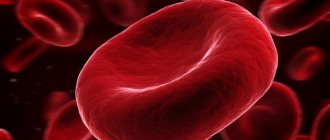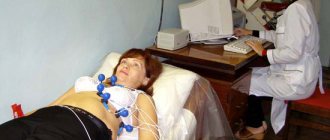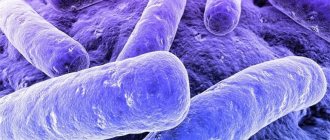AST analysis - what is it?
Analysis for AST
is a blood test prescribed, first of all, if a pathology of the heart muscle or liver pathology is suspected.
AST - aspartate aminotransferase is an intracellular enzyme that is involved in the metabolism of amino acids and is found in organ tissues belonging to different body systems. Moreover, in some organs its content is especially high - these are heart tissues (cardiac muscle, or myocardium
) and liver. AcAt is also present in significant quantities in the tissues of the kidneys, skeletal muscles, and nervous tissue. To a lesser extent - in the pancreas, spleen, lungs.
It is important that AST is normally present in blood serum in small quantities. In erythrocytes (red blood cells), the concentration of AST is 10 times higher. And inside the cells, for example, the heart muscle, the concentration of AST is 10,000 times higher than in serum! When the myocardium or liver is damaged, AST is released into the blood, so an increase in its concentration is an indicator of the development of pathology.
How to reduce ALT and AST?
The question is incorrect, but this is what patients often ask about. If the liver begins to deteriorate, you need to think not about how to quickly return enzymes to normal, but about what triggered their increase. After all, it’s not the numbers in the tests that matter to you, but the health of your liver, right? With the help of tablets, you can reduce the level of ALT and AST, but this will not stop the pathological process and it will slowly and surely progress to cirrhosis.
It is important to understand: it is not so easy to cause the death of liver cells; the organ is quite resistant to damaging factors. In order for hepatocytes to begin to die en masse, a prolonged exposure (or a single, but very strong) is required. For example, one serving of fried potatoes is not enough to trigger an increase in enzymes. But if you eat it every day for a month, biochemistry may show a jump in ALT and AST.
Once you find the cause and deal with it, the enzymes will return to normal on their own.
AST analysis: elevated values
An AST test may show an increased value in the following diseases:
- myocardial infarction (the occurrence of a focus of necrosis of the heart muscle caused by a violation of the coronary circulation). With the development of necrosis in the myocardium, an analysis for AST may show an excess of the norm several times (from 2 to 20). Moreover, changes in the results of the analysis on AST may precede the appearance of typical signs of a heart attack on the ECG;
- some other diseases of the cardiovascular system (acute rheumatic carditis, pulmonary thrombosis, severe attack of angina);
- hepatitis of various etiologies (infectious, toxic, alcoholic). In order to determine whether the increase in AST is caused by liver or heart problems, the AST/ALT ratio is used (ALT is another enzyme - alanine aminotransferase, present in significant amounts in the liver). Normally, the AST/AlAT ratio is 1.33±0.43. In case of liver diseases, this indicator is less than normal, in case of heart disease, on the contrary, it is more;
- other liver diseases: cholestasis (impaired bile secretion), liver cancer;
- skeletal muscle injuries;
- acute pancreatitis;
- myopathies (muscular dystrophies).
Alanine aminotransferase (ALT)
Other names : Bilirubin total, Total bilirubin, TBIL.
Service code for ordering 1042 (Alanine aminotransferase) in the Sinevo medical laboratory.
Other names: glutamate-pyruvate transaminase, serum glutamate-pyruvate transaminase, SGPT, A lanine aminotransferase ( ALT ) , Serum glutamic-pyruvic transaminase, SGPT, Alanine transaminase, AST/ALT ratio.
General information:
Alanine aminotransferase (ALT) is an enzyme that is found in all cells of the body, mainly in the liver and kidneys, but also in the heart and muscles. Normally, ALT activity in the blood is very low. During conditions associated with liver cell damage, the enzyme is released into the bloodstream; ALT levels in the blood may rise 1-3 weeks before the onset of symptoms and a week before bilirubin levels rise in the blood.
In laboratory diagnostics, a blood test for ALT is used to diagnose and evaluate the effectiveness of therapy for liver diseases, and less commonly, heart and pancreas diseases. Together with other tests that perform the same tasks, the ALT test is part of the so-called liver tests.
Important! An increase in ALT levels is also possible with myocardial infarction, diseases of the muscles and pancreas. Therefore, in order to determine the location of the pathological process, the activity of the ALT enzyme in the blood is usually determined together with another enzyme - AST. With an increased concentration of one or both indicators, the ALT/AST ratio is calculated - the de Ritis coefficient. It allows you to indirectly judge in which organ the damage occurred.
Intramuscular injections, as well as intense physical activity, can increase ALT activity in the body.
In some patients, liver damage and, as a result, an increase in ALT activity can be caused by taking dietary supplements, oral contraceptives, and vitamins. Therefore, it is necessary to inform your doctor not only about all medications you are taking, but also about nutritional supplements.
In addition, frequent consumption of fast food can lead to a slight increase in ALT activity due to liver damage; if nutrition is normalized, ALT activity returns to normal.
Indications for use:
- for symptoms of liver disease: weakness, fatigue, loss of appetite, nausea, vomiting, abdominal pain and bloating, yellowing of the skin and whites of the eyes, dark urine, light-colored stool, itchy skin;
- in the presence of factors that increase the risk of liver disease: previous hepatitis or recent contact with hepatitis infection, excessive alcohol consumption, hereditary predisposition to liver disease, taking medications that can damage the liver, excess weight or diabetes;
- diagnosis and differential diagnosis of liver diseases;
- donor screening;
- examination of contact persons in the outbreak of viral hepatitis;
- myocardial pathology;
- diseases of skeletal muscles;
- determining the effectiveness of treatment of liver diseases.
Method: kinetic (International Federation of Clinical Biochemistry (IFCC))
Analyzer : Cobas 6000
Units of measurement: U/l
Material for research: venous blood serum
Preparation:
- Children under 1 year of age should not eat for 30-40 minutes before the test.
- Children aged 1 to 5 years should not eat for 2-3 hours before the test.
- Take on an empty stomach (after sleep and 8-12 hours of fasting). It is permissible to drink only clean non-carbonated water (up to 200 ml) (with the exception of glucose testing).
- Do not consume spicy, fatty, fried foods or alcohol 1-2 days before the test.
- Avoid physical and emotional stress 1 day before the test.
- Do not smoke for at least 1 hour before the test.
- It is not recommended to take it after X-rays, physiotherapeutic procedures and instrumental examinations.
Interpretation of results:
The result of laboratory tests is not a sufficient basis for making a diagnosis. Interpretation of the results and diagnosis is carried out only by the attending physician.
Reference values:
- Adults: men: <41; women: <31
- Children: 1 day: <31;
- 2-5 days: <49;
- from 6 days to 6 months: <56;
- 7 to 12 months: <54;
- from 1 to 3 years: <33;
- from 4 to 6 years: <29;
- from 7 to 12 years: <39;
- from 13 to 17 years old boys: <27, girls <24
Possible causes of increased ALT levels:
- shock, severe burns;
- Infectious mononucleosis;
- acute lymphoblastic leukemia;
- cardiovascular pathology: myocardial infarction, heart failure, myocarditis;
- acute pancreatitis;
- severe gestosis in the second trimester of pregnancy;
- myositis, myodystrophy, muscle injuries, rhabdomyolysis, polymyositis and dermatomyositis;
- intramuscular injections;
- obesity
- necrosis of liver cells of any etiology (viral hepatitis, toxic liver damage, liver cirrhosis);
- extensive trauma and necrosis of skeletal muscles;
- cholestatic and mechanical jaundice;
- liver cancer (primary and metastatic);
- fatty hepatosis;
- chronic alcoholism;
- severe pancreatitis;
- severe burns;
- primary carnitine deficiency.
Possible reasons for a decrease in ALT levels:
- genitourinary system infections;
- tumors of various origins;
- deficiency of pyridoxal phosphate-vitamin B6 due to poor nutrition, alcohol consumption;
- liver diseases due to alcoholic hepatitis, fatty infiltration of the liver;
- pregnancy;
- severe liver damage - extensive necrosis, cirrhosis (when the number of cells synthesizing ALT is significantly reduced).
Substances that increase ALT levels:
Disopyramide, Quinidine, Amiodarone, Sulfanilamide, Clindamycin. Lincomycin, Azithromycin, Erythromycin, Tetracycline, Captopril, Methyldopa, Amitriptyline, Warfarin, Heparin sodium, Ranitidine, Cimetidine, Azathioprine, Cyclosporine, Omeprazole, Clavulanic acid, Metoprolol, Procaine, Papaverine, Pindolol, Acetylsalicylic acid, Diclofenac, Ibuprofen, Indomethacin , Naproxen , Piroxicam, Phenylbutazone, Ganciclovir, Didanosine, Zalcitabine, Levamisole, Ketoconazole, Clotrimazole, Dapsone, Nitrofurantoin, Asparaginase, Dacarbazine, Tamoxifen, Chlorambucil, Mercaptopurine, Methotrexate, Cytarabine, Thioguanine. Levodopa, Probenecid, Ondansetron, Phenobarbital, Isoniazid, Ethambutol, Ethionamide, Carbamazepine, Verapamil, Mitoxantrone, Pyrazinamide, Halothane, Disulfiram, Allopurinol, Propylthiouracil, Bromocriptine.
Substances that reduce ALT levels:
- aspirin,
- phenothiazines,
- interferon.
Where to get tested for ALT
take a blood test for ALT at any Synevo point in Minsk, Baranovichi, Bobruisk, Borisov, Brest, Vitebsk, Gantsevichi, Gomel, Grodno, Zhlobin, Lida, Mogilev, Mozyr, Molodechno, Novogrudok, Novopolotsk, Orsha, Pinsk, Polotsk, Rechitsa , Svetlogorsk, Slutsk, Smorgon, Soligorsk.
The most common causes of increased ALT and AST
Doctors always first rule out these four causes if a patient has elevated ALT and AST:
- Chronic viral hepatitis. The gastroenterologist will first of all send the patient for additional tests for hepatitis: HBsAg - hepatitis B and Anti-HCV - hepatitis C. Inflammation of the liver can be completely asymptomatic, but at the same time destroy the liver day after day and ultimately lead to complete failure of the organ.
- Non-alcoholic fatty liver disease. It can immediately be suspected in people with overweight and obesity (waist circumference in women is more than 80 cm, in men - more than 94 cm), with diabetes mellitus and insulin resistance, as well as with high cholesterol in the blood.
- Drug-induced hepatitis. Absolutely all medications that we take orally, i.e. through the mouth, metabolized in the liver. The liver cleanses them, neutralizes them, and neutralizes them. The more drugs and/or the higher the dose, the greater the likelihood of drug-induced liver damage. This applies to both dietary supplements and herbal remedies (including herbal teas for weight loss) - read more here.
- Alcoholic liver disease. Alcohol is the main enemy of the liver. Regular consumption of any alcohol leads to an increase in ALT and AST. It is believed that this occurs when the “safe dose” is exceeded: for women – 20 grams of ethanol per day, for men – 40 grams. Determining your “daily norm” of alcohol is very simple: the amount of drink must be multiplied by the strength as a percentage and divided by 100. For example, 100 ml of wine * 10%/100 = 10 ml of pure ethanol. A woman can drink 200 ml of this wine without consequences, a man – 400 ml. Although many doctors claim that the safe amount of alcohol is a myth. A small amount of alcohol can also disrupt liver function.
Changes in blood biochemistry can be caused by other reasons, including those not directly related to the liver. But the risk factors described above are the most common.






